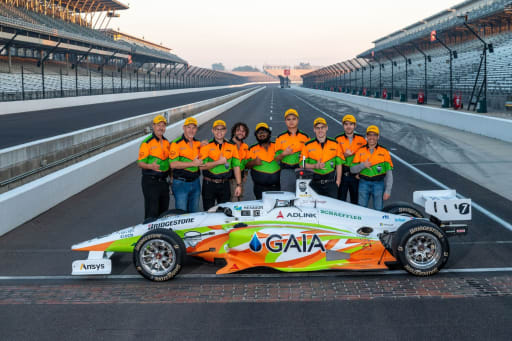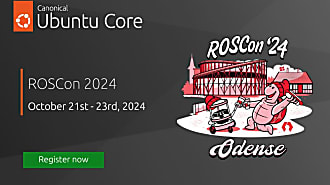Gabriel Aguiar Noury
on 14 October 2021
Driving innovation in autonomous mobile robots – University of Hawaii hits Indy 500
On October 23, the historic Indy 500 will experience a new type of race. Not just a race for all the fans and lovers of racecars, but a race that is now changing the future of driving. Autonomous mobile robots will be racing to see not only who is the fastest, but also the most technically advanced car on the track.
The Indy Autonomous Challenge brings together universities and organizations from around the world to design and create a new generation of automated vehicle software. Competitors are working to achieve the goal of crossing the finish line in the 20-lap race in 25 minutes or fewer at speeds of more than 120 mph. The race is an excellent showcase of state-of-the-art autonomous mobile robot technology.
Increasing awareness for autonomous mobile robots, and cutting edge technology in general, is a mission that closely aligns with Canonical’s values. That’s why we are a proud supporter of the competition and sponsor of the University of Hawaii.
Meet the University of Hawaii AI Racing Tech Team
Today we want to introduce you to one of the teams competing, and our sponsor team, the University of Hawaii (UH) AI Racing Tech Team. Straight out of their Maui campus, fifteen undergrads, grads and research assistants are optimizing their vehicle perception, path and control algorithms – all powered by Ubuntu. They are part of the Autonomous Vehicle Tech program that has been shaping new STEAM students developing skills in the automotive landscape. Under the leadership of engineering leader Gary Passon, the team blends traditional automotive engineering skills with machine learning, robotics and electrical engineering.
The students at the UH AI Racing Tech Team have experience in big contests. In 2020, they developed an autonomous evKart for the international 2020 Purdue evGrandPrix. In this challenge, the human-scale autonomous vehicle competed in the Autonomous Masters division. The kart was based on the evKart from TopKart, and the autonomous capability was developed by the team. This experience helped the team tackle an even bigger task, the Indy Autonomous Challenge.

The UH AI Racing Tech Team began working in the Spring of 2020 to qualify for the challenge. The task was clear – design the autonomous software stack for a Dallara AV-21 racecar. For this, each team competing in the challenge has to design a racing algorithm and system of sensor packages to complete the task and outperform other vehicles on the racetrack. The key is to innovate so that their racecar achieves the best time. This research will help the automotive industry solve some persistent commercialization challenges, such as avoiding sudden obstacles at high speeds while maintaining control.
Since 2001, Dallara has been the sole supplier of the Indy Lights series. The race car for the teams has been retrofitted with hardware and controls to enable automation. This vehicle is powered by the Adlink AVA-3501 series robot controller, running Ubuntu 20.04. Canonical’s OS enables teams to develop their autonomous navigation software using popular open source robotics frameworks such as ROS and Autoware.auto. For more than a decade, Ubuntu has consistently proven to be the most reliable, secure and user-friendly operating system available for robotics developers. And now, it’s proving to be the OS of choice for the software foundation of next-generation race cars.
“Ubuntu is a crucial part of our autonomous racing journey,” commented Gary Passon, AVT Program and Team Principal at the University of Hawaii, “with the Indy Autonomous Challenge being the leading showcase of who can adapt and develop the best autonomous algorithm. To succeed in the race, we are constantly changing and improving our code to rise to new, previously unseen performance levels. This kind of intensity makes the machines we are working with a super important part of our day-to-day tasks. It’s a no-brainer that the reliability and speed of an Ubuntu-run system makes for a perfect day at the track!”

What comes next for UH autonomous mobile robots?
The UH team has successfully completed the initial simulation stages, and it’s now one of the last ten teams still in the race. More than 25 teams started this exciting journey, which culminated in an outstanding race on the historic Indianapolis racetrack. Most recently, UH has partnered with the University of California San Diego Contextual Robotics Institute autonomous racing team to seek first place in the race. Stay tuned for results from the grand finale happening on October 23rd!
- Looking to adopt autonomous mobile robots to support your industry automation? Have a look at our beginner’s guide to adoption.



